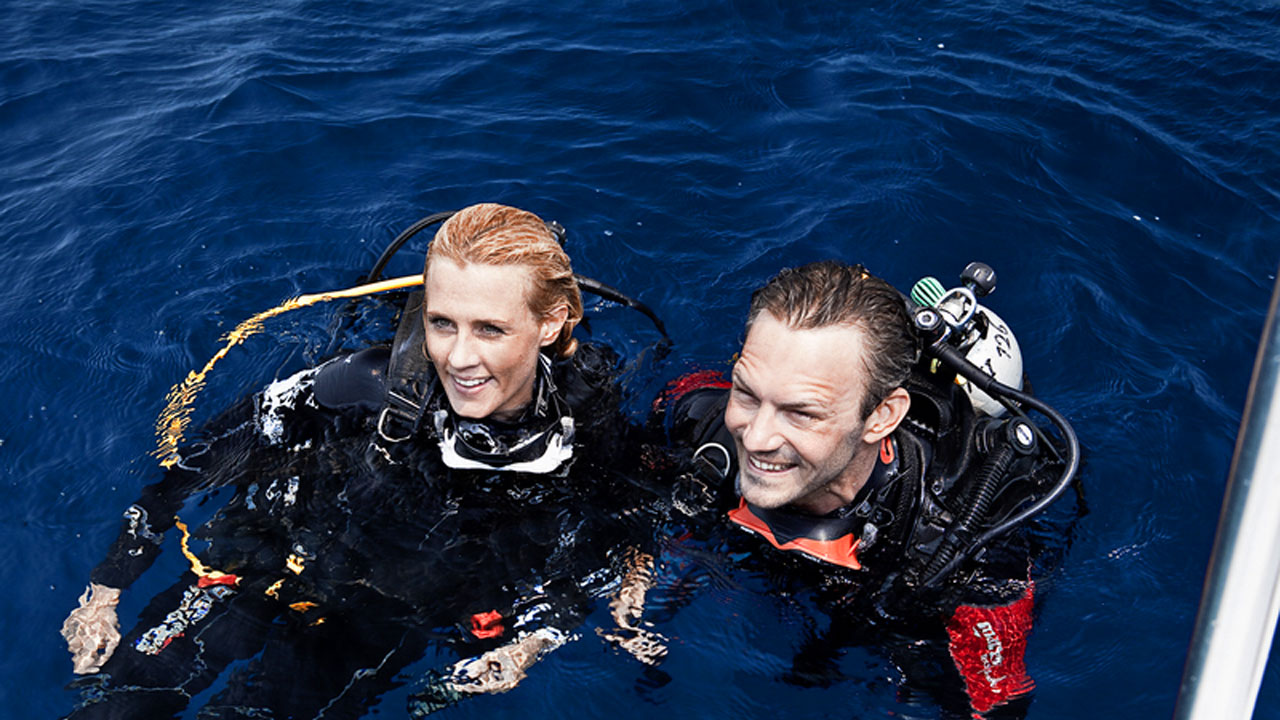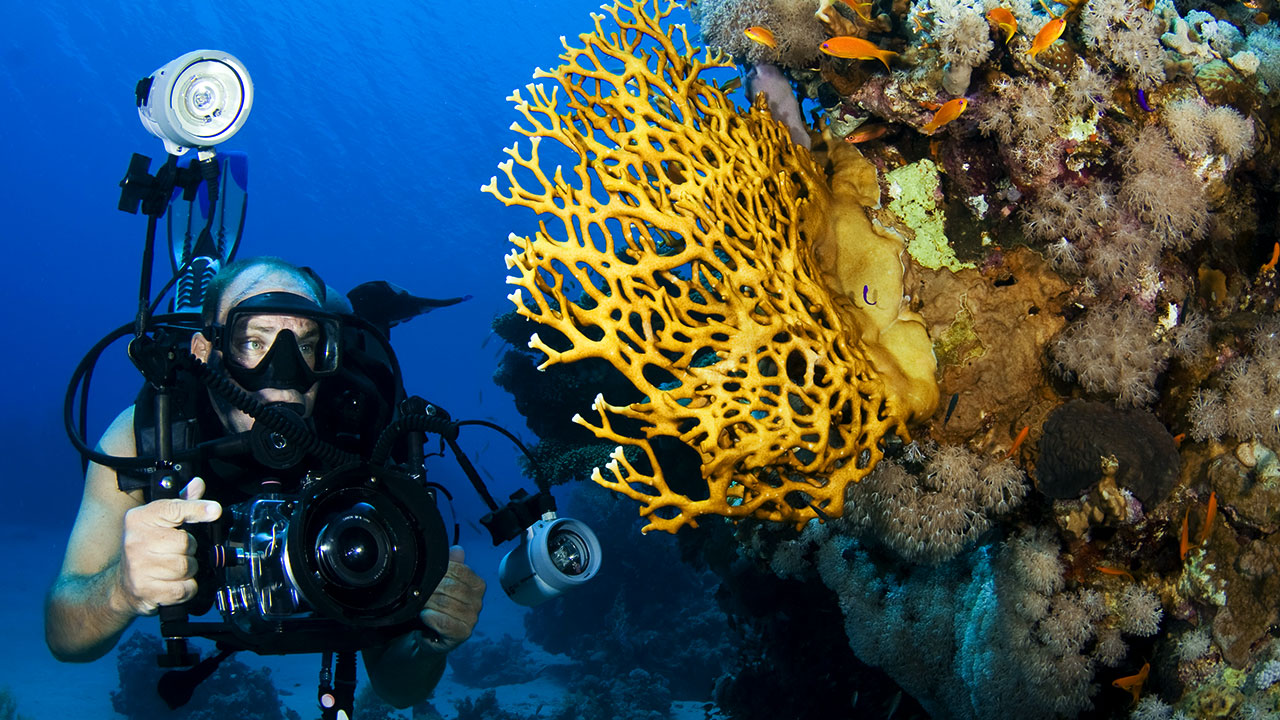Benefits and Risks of Diving With Nitrox

Nitrox has been a part of recreational diving for more than two decades. Nowadays, every major scuba certification agency has a Nitrox training program, and many dive resorts offer mixes in a range of concentrations. However, there are still quite a few misconceptions surrounding Nitrox diving. So, let us take a closer look at what is Nitrox, why some scuba divers choose to use it over regular air and what kinds of risks you should be aware of while diving with Nitrox.
Nitrox 101
Nitrox is a general name for any nitrogen/oxygen breathing gas mixture with an oxygen concentration higher than 21 percent. The mix can also be called SafeAir or Enriched Air Nitrox (EAN or EANx). The ‘x’ in EANx stands for the percentage of oxygen in the mix. For example, EAN30 means that there is 30% oxygen in the mix.
The standards for Nitrox diving were first established in the 1970s by the National Oceanic and Atmospheric Administration (NOAA). They have also created Nitrox-I containing 32% oxygen and 68% nitrogen, and Nitrox-II containing 36% oxygen and 64% nitrogen. Although EAN32 and EAN36 have become the most commonly used, Nitrox mixes can come in a variety of ratios. The recreational limit for Nitrox mixes is 40 percent oxygen.
Benefits of Diving With Nitrox
1. Longer Bottom Times. One of the main reason many people choose to dive with Nitrox is that it allows to stay underwater longer. As we all know from our Open Water certification classes, when we dive, the water pressure causes nitrogen from the air we breathe to dissolve in our bloodstream. The deeper we go, the more nitrogen will dissolve. After a certain concentration of nitrogen builds up, we must come back to the surface slowly in order to avoid either mandatory decompression stops or a case of decompression sickness. Due to the lower nitrogen concentration in Nitrox, divers can prolong their dive time by absorbing a smaller amount of nitrogen.Let us look at the example. According to the NOAA no-decompression dive tables, a diver using air can stay a maximum of 60 minutes at 60 feet (18.3 meters) of seawater, while a diver using EAN32 will be able to stay up to 92 minutes, and a diver with EAN36 up to 125 minutes at this same depth.
2. Shorter Surface Intervals. For those divers that are in a hurry to get back in, another benefit of breathing Nitrox is shorter surface intervals. A diver using Nitrox absorbs less nitrogen on a given dive than one who uses air. This can make a remarkable difference in the time it takes to off-gas on the surface. For example, a diver using air will be in pressure group H after a 45 minute dive to 60 feet (18.3 meters). This means that he will have to wait for a minimum of 5 hours and 17 minutes to repeat the same dive. A diver using EAN32, on the other hand, will be in pressure group G after a 45 minute dive to 60 feet (18.3 meters), which means that he can repeat the same dive after only 53 minutes on the surface (according to NOAA's no decompression dive tables).
3. Longer Repetitive Dive Times. Nitrox proves to be especially useful for divers, who want to perform more than one dive per day. Due to having absorbed less nitrogen on the first dive, Nitrox divers will have a longer allowable bottom time on a repetitive dive. For example, after a dive to 60 feet (18.3 meters) for 45 minutes a diver using air can stay at 60 feet for only 14 minutes if he reenters the water in half an hour. Whereas, a diver performing the same series of dives on EAN32 will be able to stay at 60 feet for 43 minutes on his second dive (according to NOAA's no decompression dive tables).
4. Reduced Post-Dive Exhaustion. Although it is not scientifically proven, many divers claim to be less tired after dives on nitrox. One of the widely accepted theories, explaining this phenomena is that lower nitrogen levels reduce the amount of microbubbles in the diver’s bloodstream, thus reducing the post-dive lethargy.
Risks of Diving With Nitrox
1. Oxygen Toxicity and Depth Limits. While Nitrox diving comes with many advantages, such as an increased bottom time for no decompression dives, it also has a few of its own concerns. One of the main ones is oxygen toxicity that can occur due to the increased levels of oxygen in the mix. To be more precise, a gas, containing any percentage of oxygen, can cause toxicity at a high enough pressure. A diver using air, for example, would have to go over 198 feet (60 meters) deep to experience acute oxygen toxicity. The danger of Nitrox is that it brings this possibility within recreational diving depths.
There are two factors that divers using Nitrox must consider to avoid oxygen toxicity - the amount and the length of exposure. Combined, these two factors are called the oxygen limit.
The amount of exposure is calculated using partial pressures, found by multiplying the percentage of oxygen in the mix by the atmospheres of pressure at the planned dive depth. For example, a diver breathing air (21 percent oxygen) at 40 meters (132 feet) (5 atm) is breathing a partial pressure of oxygen (PPO2) of 1.05 (0.21 x 5). The recreational scuba community generally recommends a maximum oxygen partial pressure of 1.4 ATA. Which means that the maximum operating depth for EAN32 is 34 meters (112 feet) and EAN36 - 28 meters (95 feet). So, contrary to the popular belief, Nitrox does not allow divers to dive deeper.
You can use this online calculator to calculate the maximum operating depth for any Nitrox mix.
Remember, the major problem with oxygen toxicity is that a diver may get little or no warning of an attack making it harder to survive. So, to reduce the risk of oxygen toxicity when using Nitrox, scuba divers must monitor their depth closely and never exceed the recommended limits. What’s more, one needs to calculate the total exposure to oxygen over a series of dives.
2. The Use of Special Gear. Because Nitrox contains a larger percentage of the highly flammable oxygen, the handling and cleaning of Nitrox tanks and valves must be done properly to avoid unintended explosions.
What’s more, those, willing to dive with Nitrox, may need to get some special equipment, such as a dive computer, that can be programmed for use with this gas mix. Scuba divers using Nitrox are also responsible for personally analyzing the mixture of oxygen and nitrogen in their scuba tanks. So, it may be a good idea to buy an oxygen analyzer. As for the regulators, recreational divers using Enriched Air Nitrox mixtures of 40% oxygen or less can use their everyday regulators, but those engaging in technical diving with higher concentrations of oxygen must use regulators and tanks that are oxygen clean. This means that special lubricants and materials need to be used to avoid an explosive reaction.
Finally, any time a tank is filled with Nitrox, it must be properly marked. The industry standard is to mark the tank with both a tank wrap, and a label or tag to identify the mixture. A Nitrox tank wrap is normally 10-13 cm (4-5 in) wide and is green/yellow in color.

Obviously, there are quite a few things to consider when it comes to diving with Nitrox. You need to understand the partial pressures and depth limitations, as well as know how to check the mix in your cylinder and plan the dive accordingly. However, just as many things in scuba, Nitrox, when used properly and with the necessary training (special Nitrox certification is a must), can be a great tool to enhance your dives.




